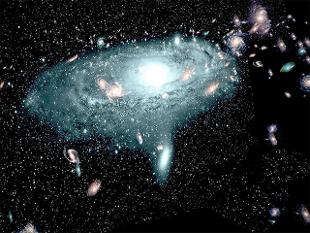A research team of astronomers has detected strange infrared rays from space while using the Atacama Large Millimeter/submillimeter Array (ALMA), the world’s largest ground-based facility for observations in the millimetre/submillimetre regime in Chile.
The researchers, from the University of Tokyo, After accumulating millimetre-waves from faint objects throughout the universe, said such objects are fully responsible for the enigmatic infrared background light filling the Universe.
The Universe looks dark in the parts between stars and galaxies, baffling scientists. Astronomers discovered that there is faint but uniform light, called the “cosmic background emission,” coming from all directions in space.
This background emission has three main components; Cosmic Optical Background (COB), Cosmic Microwave Background (CMB), and Cosmic Infrared Background (CIB).
The origins of the first two have already been found. The COB comes from a huge number of stars, and the CMB comes from hot gas just after the Big Bang. Less is known about the origin of CIB, until now.
“The origin of the CIB is a long-standing missing piece in the energy coming from the Universe. We devoted ourselves to analysing the gigantic ALMA data in order to find the missing piece,” said Seiji Fujimoto, a member of the team.
The researchers analysed the vast amount of Atacama Large Millimetre/submillimetre Array (ALMA) data taken during about 900 days in total looking for faint objects.
They also searched the datasets extensively for lensed sources, where huge gravity has magnified the source making even fainter objects visible.
They discovered 133 faint objects, including an object five times fainter than any other ever detected. They found that the entire CIB can be explained by summing up the emissions from such objects.
Dust in galaxies absorbs optical and infrared light and re-emits the energy in longer millimetre waves which can be detected with ALMA.
“However, we have no idea what the rest of them are. I speculate that they are galaxies obscured by dust. Considering their darkness, they would be very low-mass galaxies,” Masami Ouchi, also from University of Tokyo, said.



